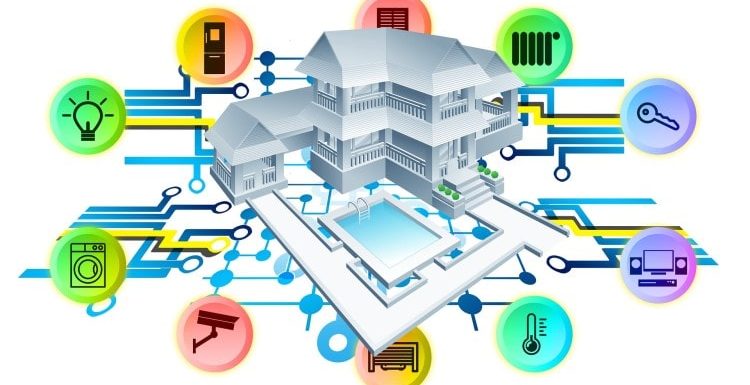
Wireless technology has revolutionized the way we connect to the internet and share information. While the convenience of wireless connectivity is undeniable, it has also introduced new security challenges. This article explores wireless security protocols, wireless encryption, and authentication methods, as well as common vulnerabilities, threats, and best practices for securing wireless networks.
Wireless Security Protocols
There are several wireless security protocols available, each with its unique set of features and strengths. The most widely used protocols include:
- Wired Equivalent Privacy (WEP): One of the oldest and least secure protocols, WEP is no longer recommended for use due to various vulnerabilities.
- Wi-Fi Protected Access (WPA): A significant improvement over WEP, WPA offers better encryption and authentication methods.
- Wi-Fi Protected Access 2 (WPA2): Building on the strengths of WPA, WPA2 offers enhanced security through the use of Advanced Encryption Standard (AES) and improved key management.
- Wi-Fi Protected Access 3 (WPA3): The latest and most secure protocol, WPA3 provides superior encryption, robust authentication, and protection against brute-force attacks.
Wireless Encryption and Authentication
Wireless encryption and authentication are essential components of wireless security protocols. Encryption ensures the confidentiality of data transmitted over the wireless network, while authentication verifies the identity of devices attempting to connect.
- Encryption: The most widely used encryption methods include Temporal Key Integrity Protocol (TKIP) and Advanced Encryption Standard (AES). TKIP is an older encryption method found in WPA, while AES is more secure and used in WPA2 and WPA3.
- Authentication: Common authentication methods include Pre-Shared Key (PSK), which relies on a shared password, and Extensible Authentication Protocol (EAP), which enables the use of more advanced authentication mechanisms such as digital certificates and two-factor authentication.
Wireless Vulnerabilities and Threats
Wireless networks are susceptible to various threats and vulnerabilities, including:
- Unauthorized access: Intruders can exploit weak security configurations to gain unauthorized access to the network and steal sensitive information.
- Eavesdropping: Attackers can intercept and monitor unencrypted data transmitted over the wireless network.
- Man-in-the-middle attacks: Cybercriminals can intercept and modify data transmitted between two devices without their knowledge.
- Rogue access points: Unauthorized access points can be set up by attackers to lure users into connecting to a malicious network.
- Denial of service (DoS) attacks: An attacker can flood a network with traffic to overwhelm it, causing disruption to legitimate users.
Wireless Security Best Practices
To mitigate these threats and secure your wireless network, consider adopting the following best practices:
- Use strong encryption and authentication: Opt for the most secure protocol available, preferably WPA3, which offers advanced encryption and robust authentication mechanisms. Utilize strong encryption methods, such as AES, to protect your data confidentiality and integrity during transmission.
- Change default credentials: Default network names (SSIDs) and passwords are often targeted by attackers. Replace them with unique, strong credentials to minimize the risk of unauthorized access. Additionally, periodically changing passwords can further enhance security.
- Enable network segmentation: Dividing your network traffic into distinct zones or segments helps contain the potential impact of an attack. By limiting access and isolating sensitive information, you reduce the risk of an attacker gaining control over your entire network.
- Regularly update firmware and software: Keeping your devices and network equipment up-to-date is crucial in minimizing vulnerabilities. Routinely check for and apply the latest security patches to ensure your network remains protected against emerging threats.
- Implement a strong password policy: Encourage users to create complex, unique passwords that combine uppercase and lowercase letters, numbers, and special characters. This makes it harder for attackers to guess or crack passwords. Additionally, consider implementing multi-factor authentication (MFA) for an extra layer of security, requiring users to provide multiple forms of identification before granting access.
- Monitor and audit network activity: Regularly review your network activity to detect signs of unauthorized access, intrusion, or unusual behavior. Implementing a network monitoring system can help you proactively identify and address security issues before they escalate.
- Secure physical access: Ensure that your wireless access points, routers, and other network equipment are physically secured to prevent unauthorized tampering or theft. Limit access to network equipment to authorized personnel only.
- Disable unnecessary services: Turn off any unused features or services on your wireless devices and network equipment to minimize potential attack vectors.
- Educate users: Provide training and guidance to users on safe online practices, including recognizing phishing attempts, avoiding unsecured Wi-Fi networks, and maintaining up-to-date antivirus software.
- Develop an incident response plan: Create a well-defined process for handling security incidents, including steps to contain the breach, assess damage, restore services, and communicate with stakeholders. This ensures your organization can swiftly respond to and recover from a security breach.
Wireless security is a critical concern for individuals and organizations alike. By understanding the various wireless security protocols, encryption methods, authentication techniques, and potential threats, you can take steps to safeguard your network and data.
